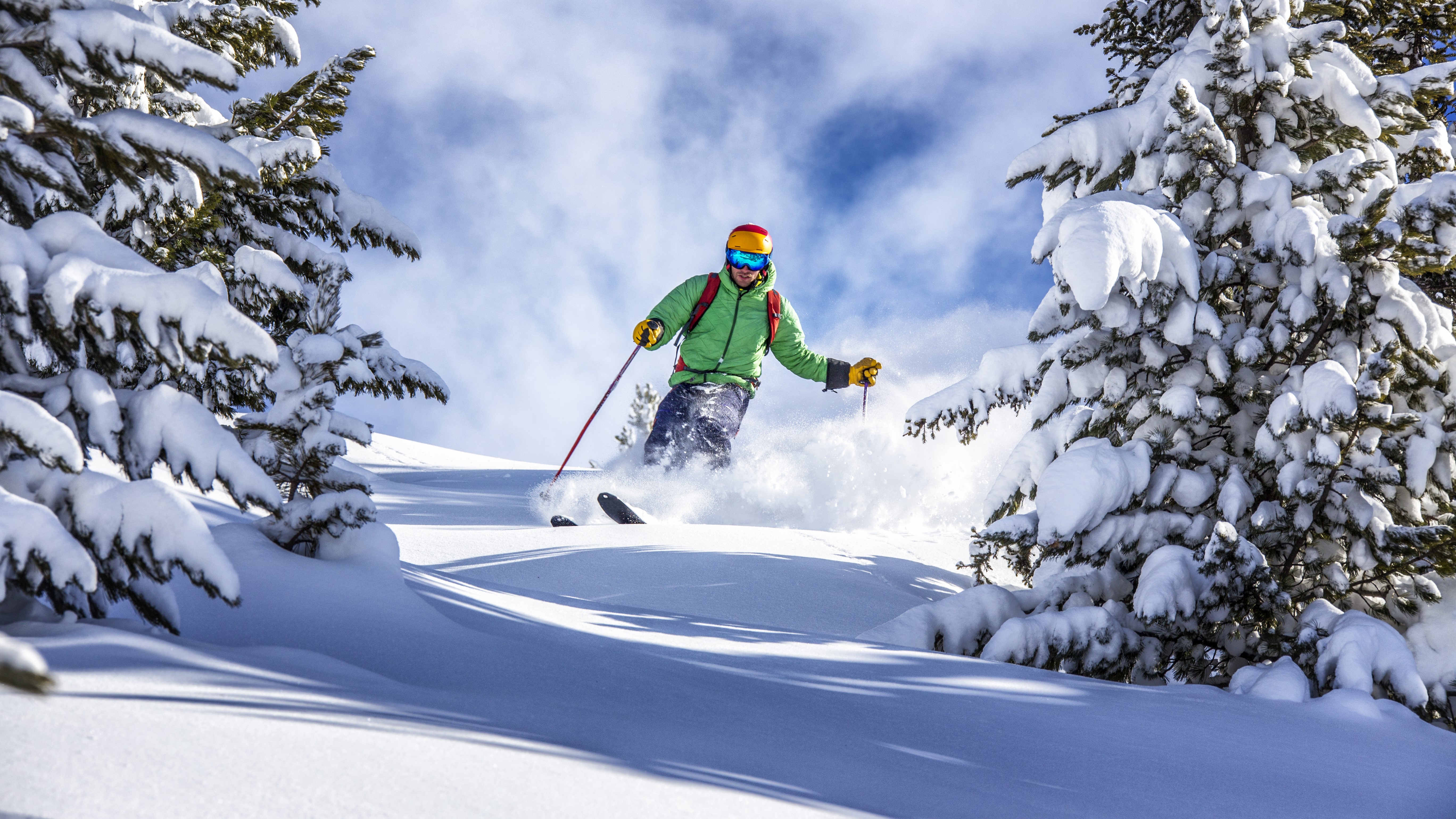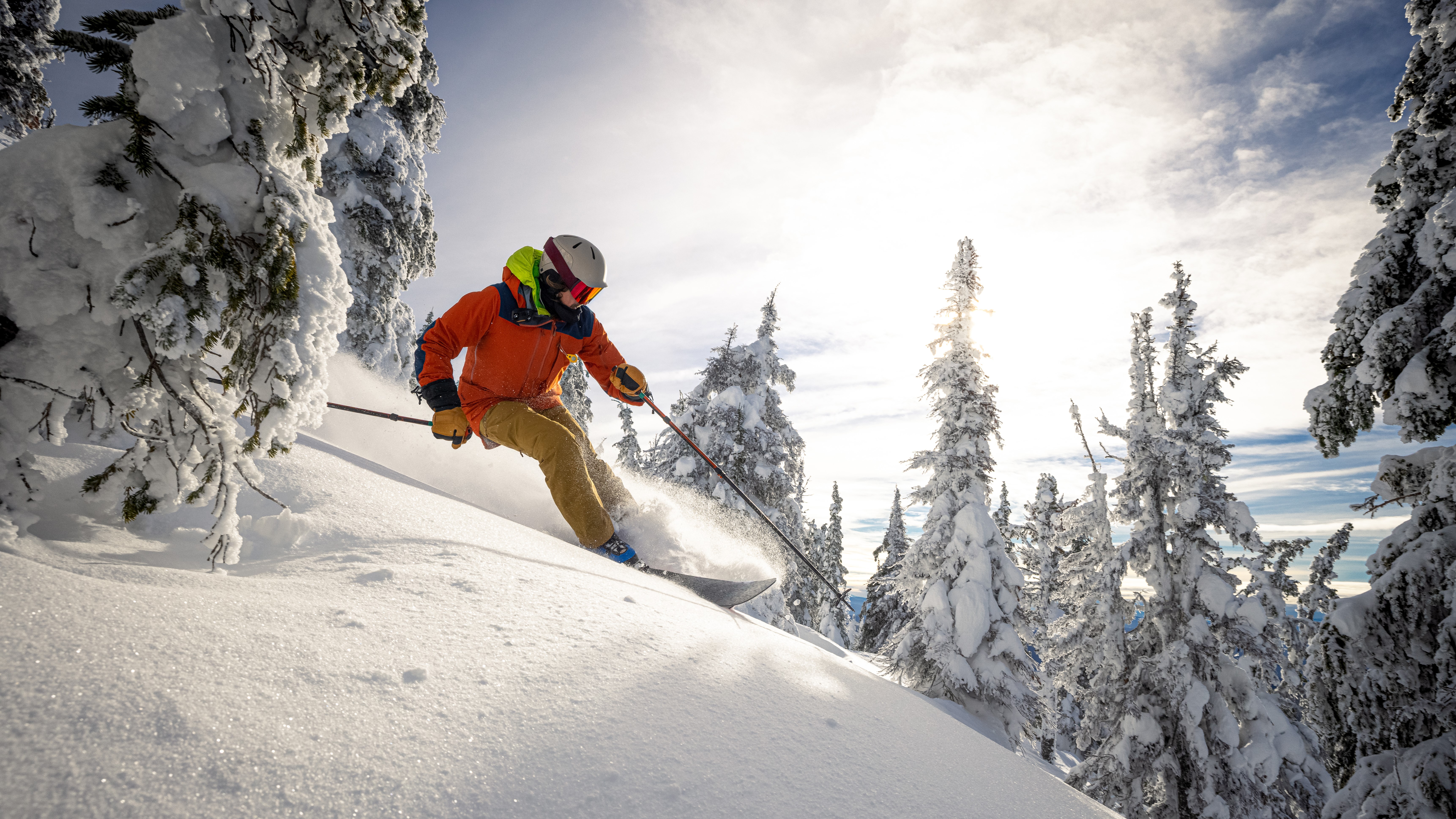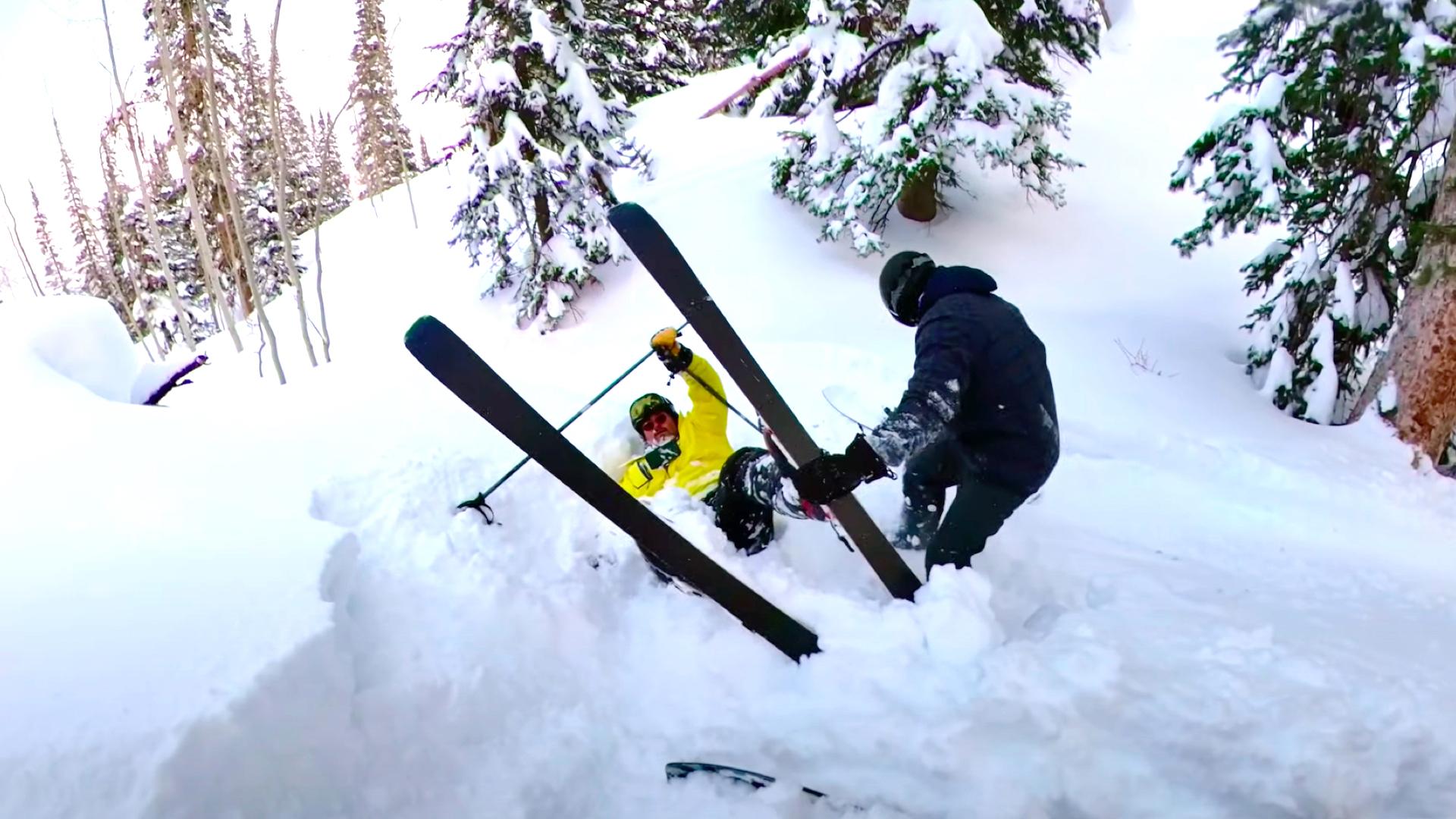I nearly learned about tree wells the hard way – here's how to avoid my mistakes
How to stay safe in deep powder when tree well hazard is high and you want to find a powder stash

I very nearly learned about tree wells the hard way. It was my second winter living in Vail and one of the best snow years on record. All of my previous skiing had taken place in Vermont, where snow wasn’t a given and when it came, it was typically icy. So I was learning to ski powder in a trial-by-fire.
That morning, my roommates and I had awoken to the text that all skiers dream of: 14 inches of fresh powder overnight. We hauled on our ski pants, grabbed our snorkels and hit the road. I was with two expert skiers, but because I’d got to the point where I could handle powder reasonably well and wouldn’t slow them down too much, they let me come with them into the trees rather than leaving me on the frontside. They were a little ahead of me and I’d take my time, revelling in this new experience of floating through knee deep powder in a forest while gentle flakes drifted down from the branches above. It was magical.
I fell, a lot. One such tumble had me ejecting and face planting into soft, pillowy snow under the branches of a pine tree. I thrashed around a bit, giggling with the novelty of it all, and as I struggled to get my skis back on, I heard my friends calling my name.
“I’m okay!” I shouted back. “I just fell in some deep snow next to a tree.”
A minute later, a bit out of breath, I skied out of the trees to find the others on the run looking ashen-faced. Again, I tried to assure them that I was fine – the snow was so soft I could never have hurt myself and I wasn’t going fast enough to hit the tree. That’s when they told me about tree wells.

What is a tree well?
A tree well is a hole or depression that forms in the snow surrounding the base of a tree. They’re most common around conifer trees and you’re more likely to encounter one out west than back east if you’re in the US. Out in the open, falling snow compacts and becomes firm, but the branches of conifer trees prevent this settling from taking place, resulting in a depression of deep and very loose snow near the base of the tree which is obscured by the branches. Depending on how much snow has fallen over the winter, tree wells can be 10 feet deep, or more.
What happens when you fall into a tree well?
Now, my story might not sound that scary. After all, I got up, brushed myself off and went on to have the most memorable ski day of my life. But it could have gone horribly wrong.
All the latest inspiration, tips and guides to help you plan your next Advnture!
Last year alone, 17 people died as a result of falling into tree wells just in Colorado resorts. According to Wilderness Medicine Magazine, tree well deaths account for 65 percent of non-avalanche related snow deaths.
Basically, because of how deep and soft the snow is, if you fall head first into a ski well, it’s very difficult to extract yourself and you are in danger of suffocation, especially if the tree well is so deep that your friends are no longer able to see you.

How to stay safe around tree wells
Before you start composing a strongly worded email to me, I am aware that I did a lot of things wrong. I wasn’t nearly experienced enough to be skiing where I was and I didn't have any training in backcountry skiing or deep snow safety. I’ve since gone on to take powder skiing lessons with a pro, do avalanche training with ski patrol and in general take things a lot more seriously on the hill (and yes, I still enjoy coasting through the trees, but I prefer an Aspen glade these days).
The best way to avoid tree wells of course is to stick to groomed in-bounds runs. Here you won’t find either tree wells or trees. If you want to ski trees and find a powder stash, I get it, but particularly out west, you have to know the risks and adhere to the following to stay safe:
- Educate yourself on powder and backcountry skiing as well as avalanche safety.
- Ski with a partner and stay in sight of each other.
- Ski within your ability and stay in control.
- Stay in the spaces between trees and give the trees themselves a wide berth.
- Stop frequently to assess the situation.
- Don’t use the wrist straps on your ski poles.
- Carry emergency gear: your phone, avalanche beacon, shovel, probe, RECCO reflector and consider an inflatable ski backpack.
If you do get it wrong and tumble into a ski well, it’s important not to panic as this can make things worse. Instead, stay calm and try to roll over and grab onto branches, keeping your head higher than your feet if possible. Make noise by shouting or using your whistle so your partner can find you and make space around your face to help you breathe.
If it’s not you but your partner that goes down, you have to act fast. Don’t think you can ski down to get help – alert ski patrol with your phone if you can, or use your whistle to alert other skiers. Immediately start trying to dig your friend out. Don’t try to pull them out; instead, figure out where they’re head is and start digging in from the side to free up space around their airway.
Julia Clarke is a staff writer for Advnture.com and the author of the book Restorative Yoga for Beginners. She loves to explore mountains on foot, bike, skis and belay and then recover on the the yoga mat. Julia graduated with a degree in journalism in 2004 and spent eight years working as a radio presenter in Kansas City, Vermont, Boston and New York City before discovering the joys of the Rocky Mountains. She then detoured west to Colorado and enjoyed 11 years teaching yoga in Vail before returning to her hometown of Glasgow, Scotland in 2020 to focus on family and writing.

